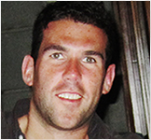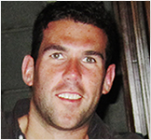
By: Ben Proctor, Insights Strategist
As published at http://researchindustryvoices.com/ on January 12, 2014
There’s no question that it’s a great time to be a researcher. Brands have more questions than ever and our bag of tricks is overflowing with different ways to get answers for them. But as we continue to shift our methodology toward digital diaries and virtual ethnographies and remote user experience, we have to stop and ask whether we’re starting to forget something important: really talking to real people.
I’d be the last to say that technology isn’t amazing and that my life and career aren’t 1,000 times easier because of it. But when I find myself in the conference room talking to consumers in a “traditional” focus group, I start to get a little worried. Am I going to remember what to say to these people? Am I going to ask them to G Chat with their peers when what I really want is for them to turn and talk to their neighbor? That hasn’t happened yet – but it could.
So my question is this: What do we need to do as researchers to stay sharp and remember how to have a CONVERSATION?
We all know that the best insights come when you toss the moderator’s guide aside and talk to people as though they were – wait for it – people. So what are the tricks we’re using today to keep the conversation flowing and the personal connection present even as we continue to migrate deeper into the online universe?
One of my favorites has always been to acknowledge that what we’re doing is often stupid. This is blasphemy, you say. But think about it: For us, spending all day talking to people about the exact shade of red on a soda bottle could be the most important aspect of our entire quarter. But for the average person, the response is that we should be doing something better with our time. So I’ve always found that lightening the mood can be a lifesaver. Whether it’s in person or in a chat room, a quick joke can say 1,000 words. A nonchalant demeanor can say even more. If we allow ourselves as moderators to enter the mind-set of the respondent and realize that they could very well not care whatsoever about what we’re talking about, we can produce some of the most meaningful insights we’ll ever encounter.
The trick here is in getting people to want to keep US interested. I’ve always hated when moderators tell a quiet room to “Speak up…it’s what we’re paying you for” or that “I’m going to get berated by my client if you don’t talk so please help me out.” But if the moderator seems like he/she is only as interested in the discussion as the respondents, I often find that the conversation improves. The respondents suddenly want to keep the moderator from falling asleep. I am now a person who has joked around with these people – who they hopefully like and would maybe even want to hang out with. Do they want ME to be bored? No more than they want to be bored themselves.
So consider this: A project could be the most stressful thing in the world for one of us but it’s an hour or two out of the lives of a respondent. If we can treat things that way, take a breather and have some fun with our jobs, just maybe we’ll get more out of a conversation than that rigid, 45-page moderator’s guide ever could.
What are some of your tricks? And how, together, can we make sure that we help each other remember how to have a tweet – I mean, conversation?
– See more at: http://researchindustryvoices.com/#sthash.Ry0ejxlJ.dpuf




